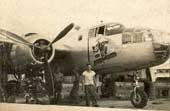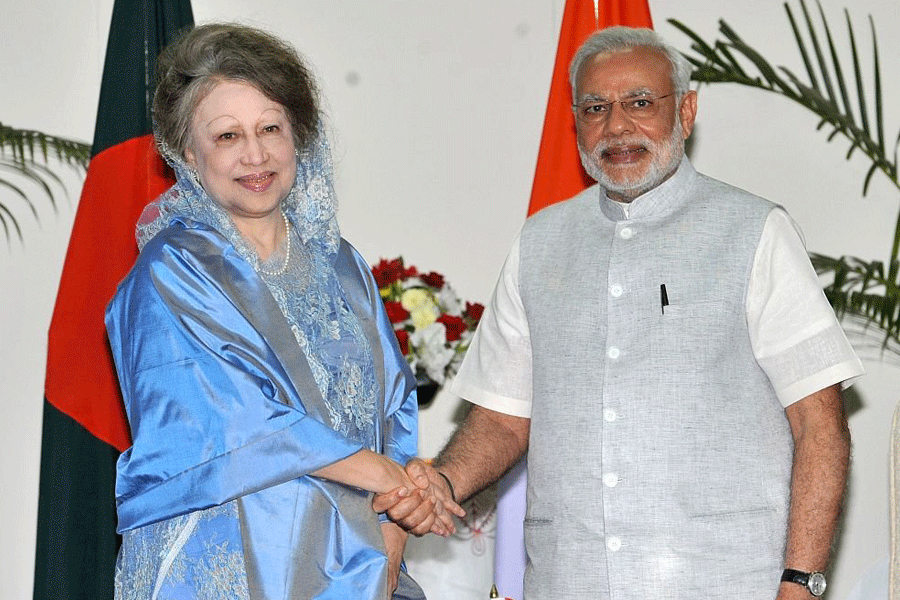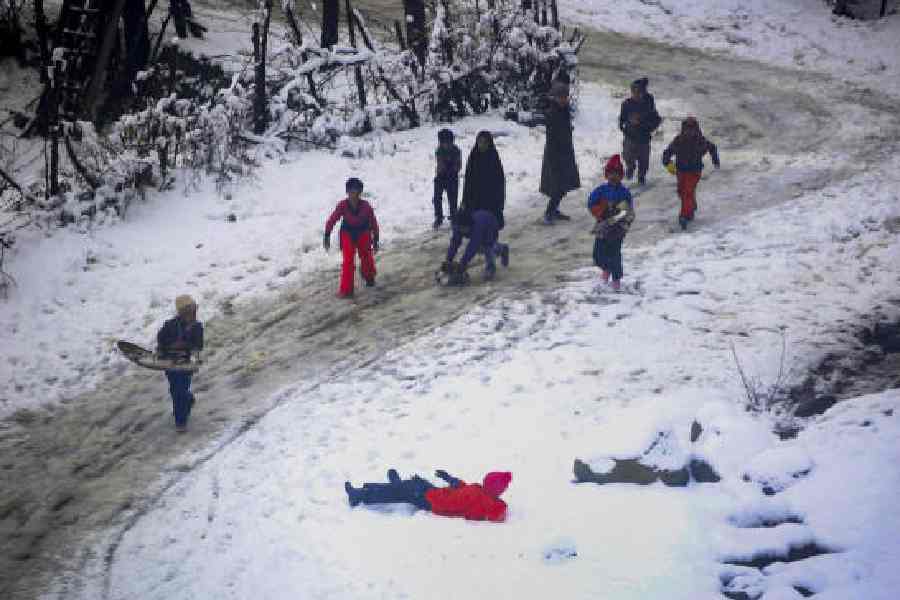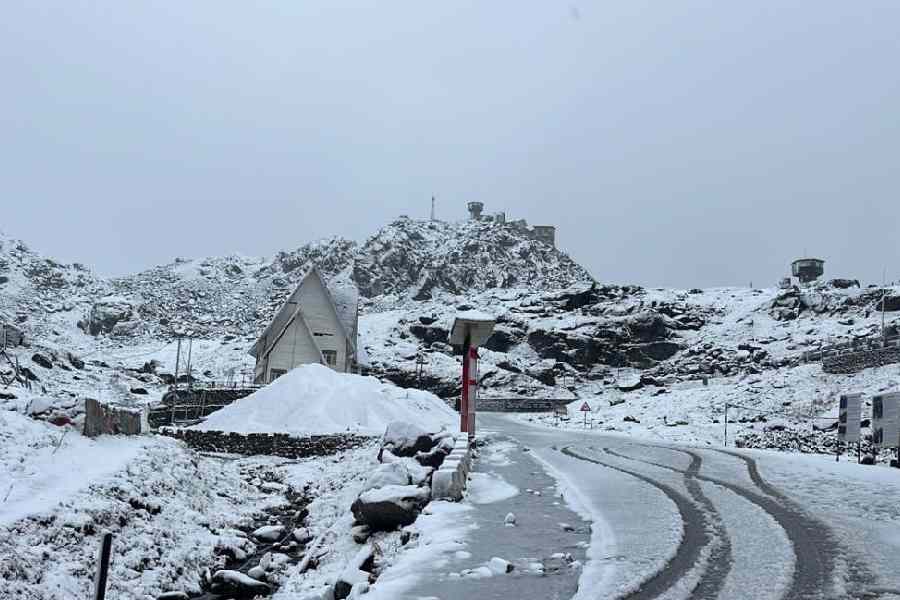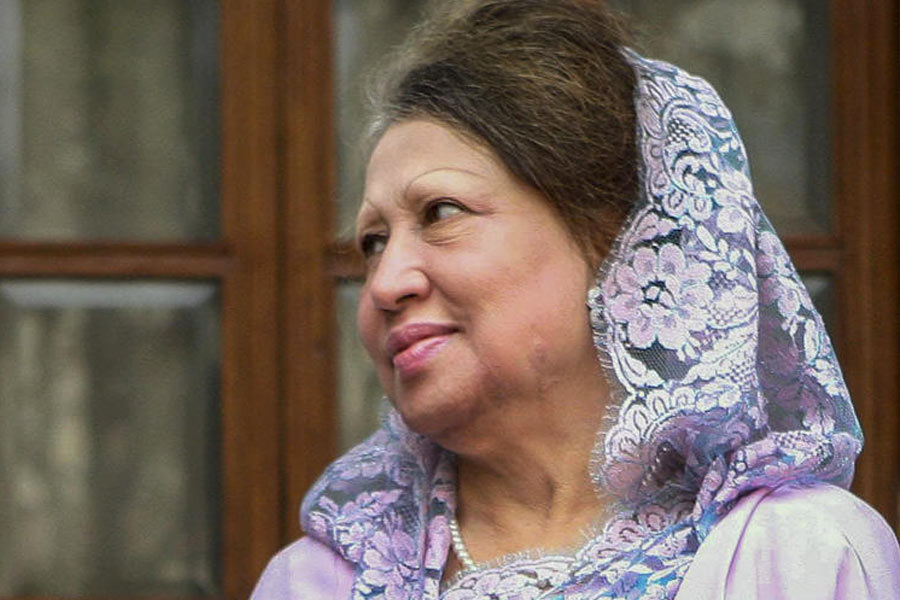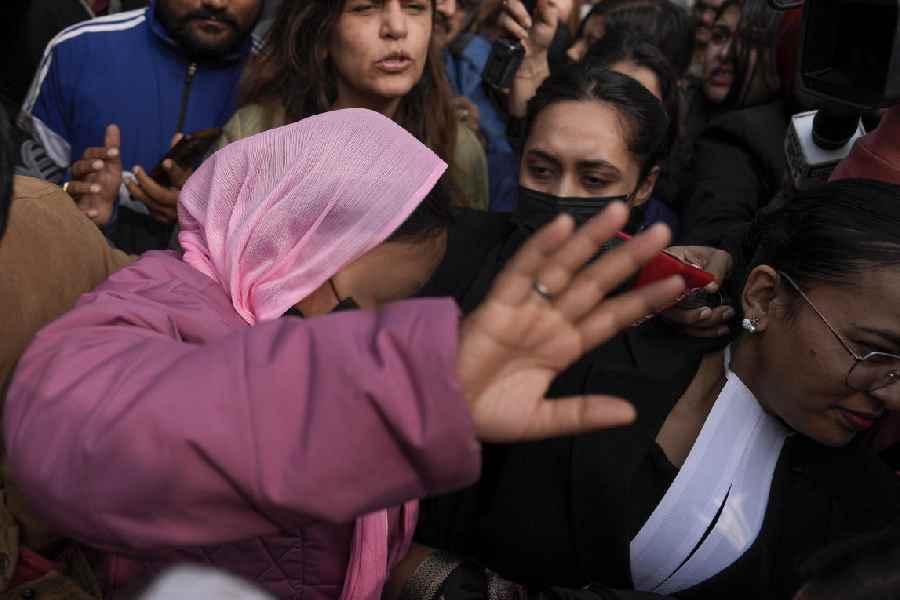 |
| A file photo taken from the family album of Sergeant George Patson, who was stationed at Chakulia in 1945. Sergeant Patson was the crew chief of the two B-25s, which were used as ?utility planes?. In his diary he wrote, ?I got to fly all over the eastern part of India in the two.? |
While looking at the silent runway lying mostly vacant ? apart from a few odd cows grazing ? one would find it difficult to associate Chakulia Airport with activities of any kind. But, this strip of land with a colourful past did see a lot of action during the Second World War.
Situated in a block that?s as historically vibrant as the small strip, today Chakulia airport is labelled ?not available for operation? by the Airport Authority of India (AAI). It shares this status with other strips at Jogbani, Khandwa, Panna, Raxaul, Shella, Asansol and Rupsi.
Therefore, on July 7 when the chief secretary of Jharkhand, M.K. Mandal, using a state government plane, sought the permission to land there, he was of course denied the right to do so. Mandal left after making an aerial survey of the abandoned aerodrome.
His sudden interest rekindled hopes for restoring the historical airstrip lying abandoned since the Second World War. And it was said, the secretary?s inspection was in the wake of his recent interaction with officials of the Airport Authority to develop the airport. So far, it seems, that the AAI?s response was positive.
Government response
The Jharkhand government of late has made it clear that it wants to embark on infrastructural development to match other massive investments in the state.
With these ventures, investment on an airport might come in handy. But, the question remains whether Chakulia ? otherwise steeped in glorious history ? should be the necessary choice.
Chief minister Arjun Munda recently inspected the grounds and declared Chakulia airdrome?s condition as ?good?.
He seems to have also added that the ?proposed? airport would be of an ?international? standard. Munda seems more than happy with his choice ? his belief being Chakulia could be an alternative to Calcutta airport, which is too busy on usual days and also faces space shortage. Many believe that Munda?s comments may not be completely off the mark.
There has been some amount of interest on the airport for quite some time now. Local MLA Dinesh Kumar Sarangi is another political personality, who has been campaigning for a better use of the abandoned airfield. He had also emphasised on the fact that once construction begins, it could provide job opportunities to the local residents.
Though Chakulia remains an attractive option as an airport, near and yet far enough from city proper (Jamshedpur), some believe that it would be difficult for the government to obtain approval for using it for civil purposes because it is situated too close to the Indian Air Force base (IAF) at Kalaikunda.
For now, as far as aviation experts are concerned, Chakulia remains a ready option. And the Jharkhand government, too, seems interested in developing the abandoned aerodrome, at least, as a cargo handling space for the time being.
Second World War
Chakulia airfield in East Singhbhum spreads across an area of 515.44 acres. Built in the 1940s at a cost of Rs 3 crore it was eventually abandoned after the war.
Of many airports built during the Second World War, Chakulia, was among four other dispersal bases of Kalaikunda, Paridoba and Dudhkundi.
The station came into existence during the war as a forward airfield against the Japanese conquest of Malaya and Burma. The large strip served its purpose well as a landing ground for planes and also as a training space for special bombing missions. It was during this period of war that the Ninth Photographic Reconnaissance Squadron and the Tenth Air Force moved from Karachi to Chakulia.
And the 45th Bombardment Squadron stationed at Chakulia during 1944-1945 began using B-29 aircrafts for the first time from this ground.
As an airfield it fell on the supply route for the Nationalist Armies of China in their fight against the Japanese.
Also, aircrafts from the RAF and the USAF would regularly fly over this space to China via Chabua (Dibrugarh), Jorhat and Vijaynagar across the infamous ?hump? route over Arunachal and East Tibet.
Chakulia and other neighbouring airfields ? Dalbhumgarh, Dudhkundi, Salua, Digri, Salbani, and Amarda ? formed a complex of airfields created by the Allies to stop the Japanese advance in the east. During the war Chakulia was, to put it simply, a battle hub.
After the war was over most airfields, including this one, fell into disuse but for the Kalaikunda Air Force station, which became so in the 1955.
Land of possibility?
The airport in Chakulia block falls under three police areas ? Mauja Suganibasa thana no. 344, Purnanapani Thana no. 354, Morebehra thana no. 355 and Dakhanisol Thana no. 243. The aerodrome lies on a piece of land owned by the government of India or a ?grairmajrua aam? (public land) under the government of Jharkhand. The runway is fully protected and under control of the local administration.
Jharkhand Civil Aviation department?s officials have been saying that a plan to develop the airfield would be ready at an ?appropriate? time. The sources, however, could not furnish any further details of the definite period. ?A lot of planning and expenditure will be required to make the airport functional for modern aircrafts,? an official confided.
In fact, the idea for the revival was abandoned previously too. During the regime of Babulal Marandi the Tatas were approached to help, but the idea did not make much headway.
While rumours of planning and revival float, the old concrete runway lies with cracks at few places. The vintage hangers remain empty and rusting. The place serves as a grazing ground for cattle, while the strip is used as a short cut by villagers from Deoshol, Chatro, Dalbhumgarh and other neighbouring areas.
A little more of the past...
Chakulia block was established on April 1, 1959. The block headquarter is situated 20 miles south-east of Ghatshila. As a block it has a police station, a post office, primary schools, middle schools, a college and a library.
When Captain Morgan was attempting to establish British rule in Dhalbhum in 1768, Chakulia was held by a zamindar, who defied the British.
Captain Morgan finally sent one Sergeant Bascombe to capture the zamindar. On his way, Seargent Bascombe was attacked several times. The zamindar also instructed his men to cut down trees and leave them on the road to prevent the officer?s progress.
The sergeant?s force had to spend half of their ammunition before they could drive off assailants. On arriving at Chakulia their difficulties ceased however, as the villagers, who had suffered from zamindar?s oppression had already beheaded him.

